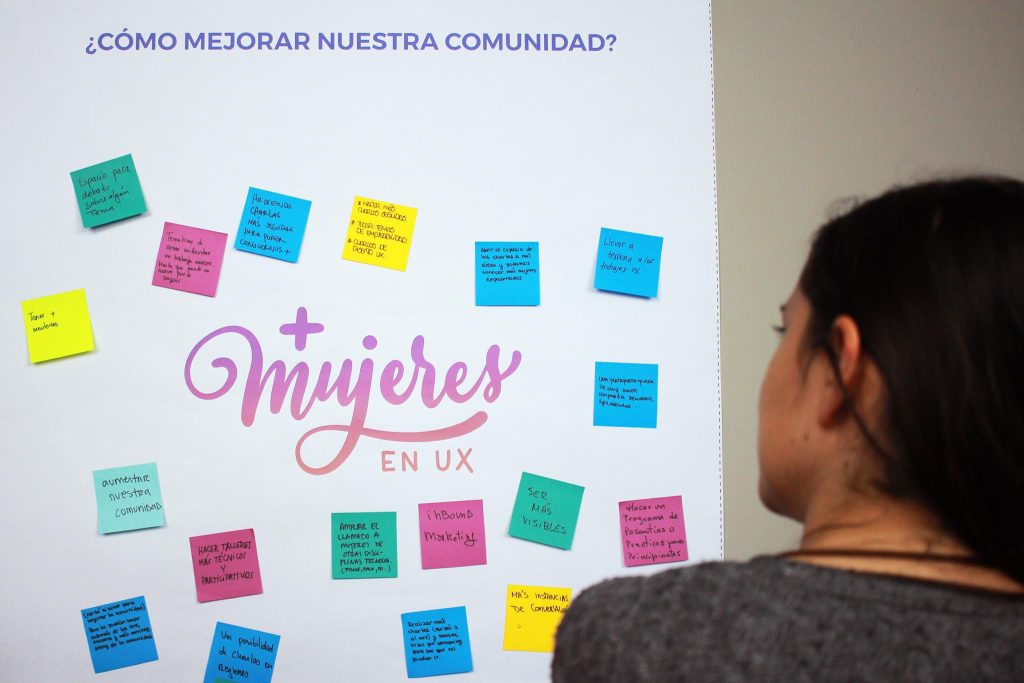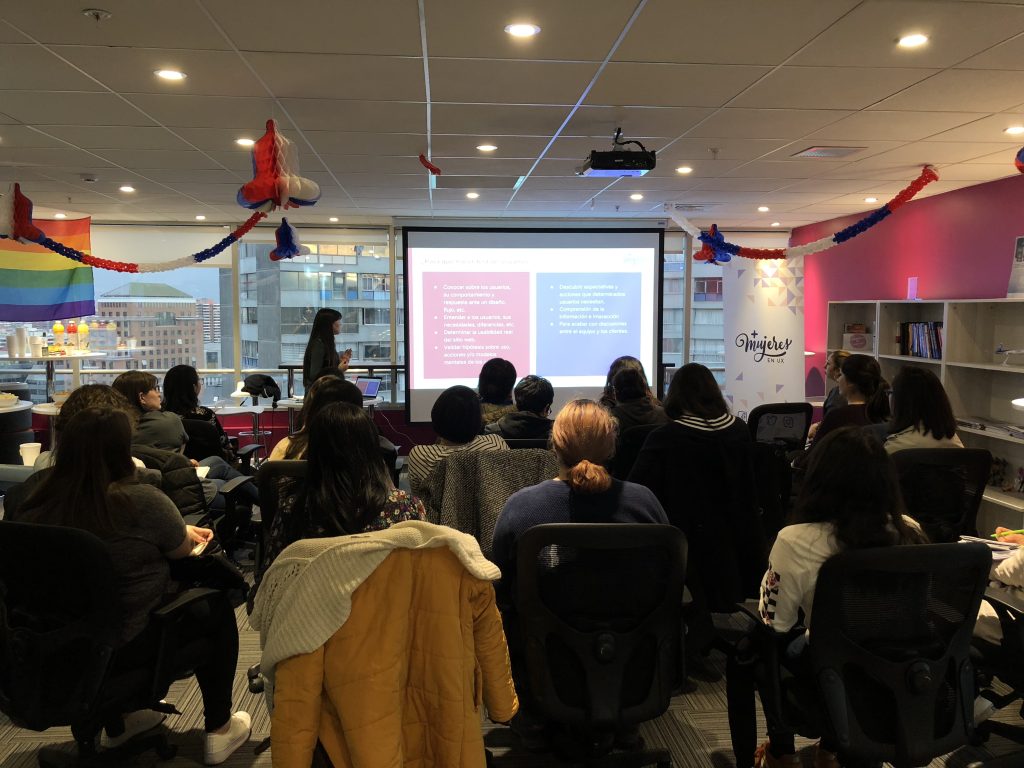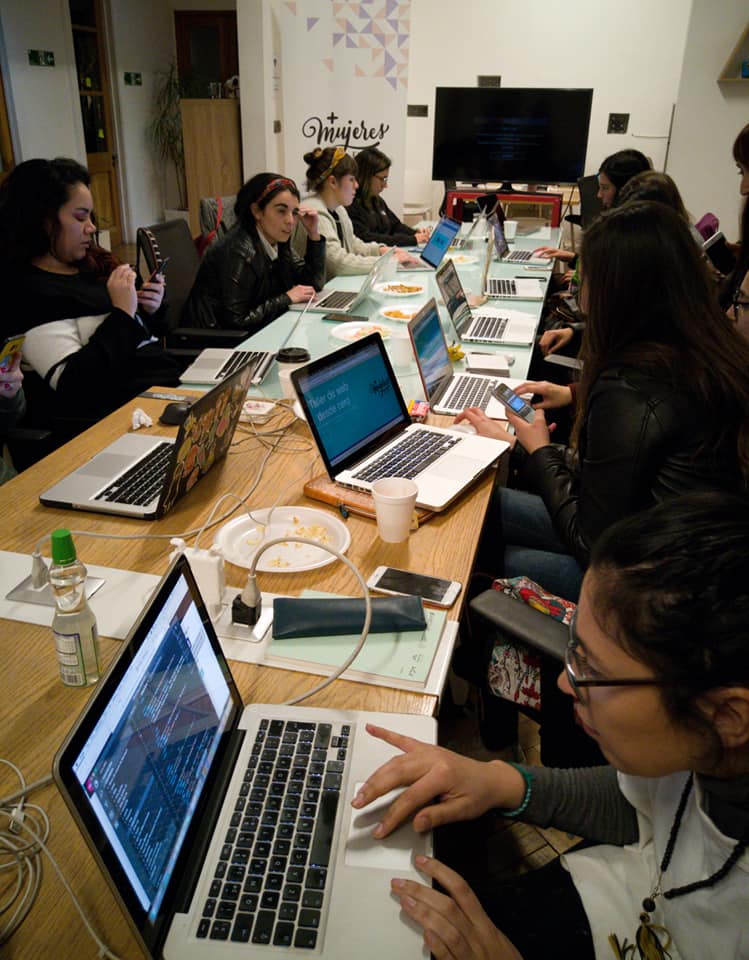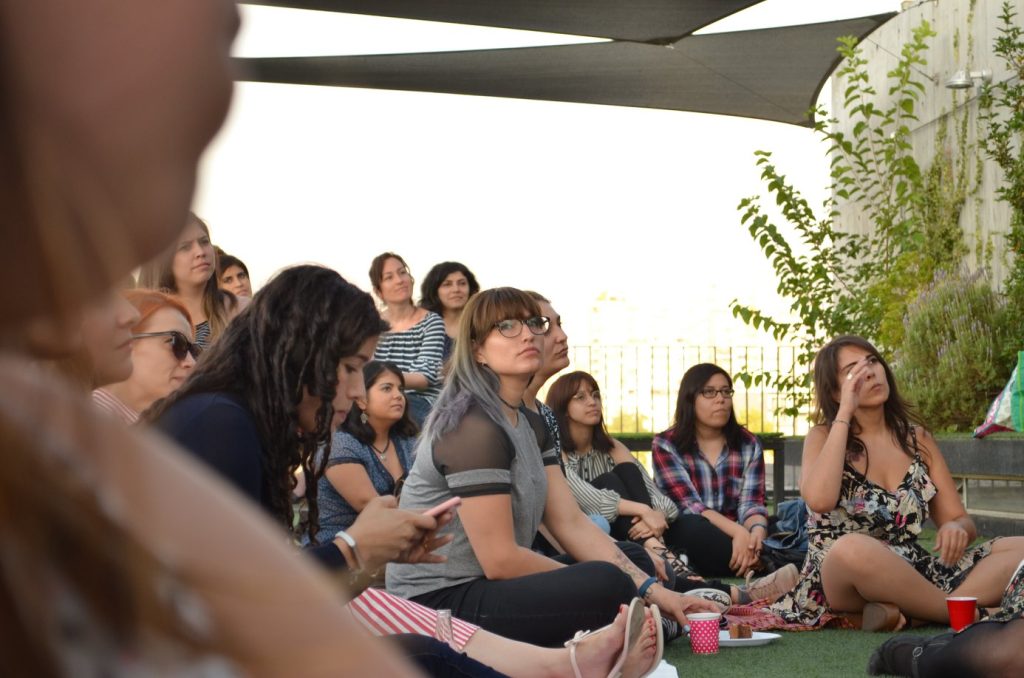It doesn’t matter if you are about to start in a leadership position or if you have been doing it for years, fear and discomfort are part of the routine. And it is in your best interest to look them in the face regularly. Here is how to take the first steps towards brave and empathic leadership.
A few years ago, I listened to “Dare to lead”, Brene Brown’s audiobook, about what it takes to be a leader and how to do it from a place of bravery and vulnerability. During that time I was just starting to lead +Mujeres en UX along with my co-founder Carolina Sepúlveda. We were facing the challenge of co-leadership and remote leadership all at once.

Fears at the beginning
At that time, to be a leader was something that I wanted, yearned for, personally needed and executed every day. Even though I loved it, I was a little frightened because it meant working with people, mobilizing them under a common objective, expanding their potential –even mentoring them–, and that meant a great responsibility for me.
That responsibility was linked to the characteristics that I thought a good leader should possess: clarity, confidence, closeness, comprehension, motivation, vision, and a long list of skills that I thought I had, but I didn’t know I was capable of pulling off. I wondered whether I was going to be able to lead and what would happen if the team didn’t see those qualities in me.
Later, my fear grew a little bit more because I discovered leadership to be a new way of exposure, a way of being completely “naked” in front of a group of people who trust and rely on you somehow. It’s difficult to be out there, on a stage. And who wants to be naked in front of their own team? Not me. So here I am sharing with you some thoughts about the beautiful process that has been building teams since the beginning of +Mujeres en UX and losing some of those first fears.

Acknowledging fear
As founders of +Mujeres en UX, many times we have seen each other being hesitant to do things: taking a new step forward for the community, bringing up hard topics in a meeting, being about to jump onto a stage to give a talk, and saying yes to a big project. All situations which have positioned us in a state of alert and have made us doubt ourselves or the future.
But with Carolina we learned to differentiate good fear from bad fear. The bad is the one that freezes you, turns you reactive, and clouds your mind. It’s the voice inside your head that says “It is not going to work”. The good one –on the contrary– wakes you up and says “This is big!”, “This is what I’m supposed to be doing”, “This is the way”, or –our favorite– “This is a new challenge”.

To lead beyond discomfort
Looking at fear in the face when you are doing something important challenges you to emotionally take a step forward even if you don’t want to. Because we, as leaders, have to manage emotions to fulfill our goals. And according to Brown, one of the best strategies is to allow ourselves to show emotions, – an act of bravery for most people.
To lead with the example with behaviors like this, allows your environment to feel free to lower their guard and be more “real”. And what better environment for a team to grow than a place where you can be yourself, where being uncomfortable is normalized and vulnerability and bravery are celebrated.
Lean approach
Vulnerability promotes creativity and innovation, processes filled with uncertainty in which we are constantly immersed –as UX designers or as women working in technology. But fear not! Allowing us to fail and recognize we make mistakes are two of the biggest team motivators; they permit us to look into ourselves and be seen by others, promoting a great sense of belonging in teams.
A mental exercise that we often do in +Mujeres en UX is to treat projects as experiments, as MVPs. If they don’t work, we take a step back and re-evaluate. We tell ourselves that we tried. “The definition of vulnerability is uncertainty, risk, and emotional exposure. But vulnerability is not weakness; it’s our most accurate measure of courage,” says Brown.
I personally do the exercise of thinking what the worst could happen if we do something. It is a technique usually used in coaching sessions, where you have to audit the pros and cons of a decision, especially the “bad fears”.
Later, I plan the interactions with my team: I try different strategies and if they don’t work, I change them. Leadership is also a process of trial and error. Even the idea of being a leader –thinking if you can make it or not– is also a test. Did they offer you the role and don’t know if you should accept? Try it and then evaluate. As Sheryl Sandberg says in her book “Lean in”, lean in into the opportunity. Nothing really binds you to a management role.
And if you said yes, are you wondering what you can do to face fear and discomfort? We have good news for you! Apply a leadership approach with ovaries with these 9 steps:
- Create safe spaces: ask your team what they need, what you can do as a leader to make your interactions or work better.
- Have difficult conversations: talk about the elephant in the room, of diversity and inclusion, about stress, demotivation, about when things go wrong, situations where we are not being respectful, or when we are not acting as we expected. Comfortable leaders don’t generate change.

Women are used to not being confrontational, to keep calm and the peace. Not acting this way –that is, being in fact “confrontational”, a.k.a speaking your mind– is a double effort because it demands courage to speak and at the same time, bravery to defy stereotypes and social constructs about what a leader should be. But it’s possible.
- Promote accountability: recognize when somebody or yourself screwed up or should be celebrated. Answer and take responsibility for your decisions and commitments.
- Forget about perfectionism: do what you can, not what you would like to do. Leave expectations behind and mobilize your team the best you can, step by step, moving forward and maybe sometimes going backward. Remember, it is a path of trial and error.
- Be empathetic and take action: be present, listen, understand those around you, be proactive in facing problems and then, offer solutions.
- Commit to your company values, your team’s values and your own: when you lead you have to differentiate what “their” values and “ours”are, identify what motivates and moves all teams that you are part of. If you don’t know which those values are, reflect and define them.
- Lead from trust: believe in your team and their skills, and don’t micromanage them!
- Advocate for women’s leadership: build a space for women to shine and take risks and big responsibilities, so others like you can grow professionally. Even better if you can design a mentorship program inside your company.
- Reframe your fears: lastly, if there is something that I want you to take from this article, is the understanding that the fear is under your control and you can change what really affects you. Reframe “I’m scared about this” for “I’m excited about this new challenge”. This way our mind will change from survival mode to enjoying mode.
Being brave is not something that we are taught growing up, but we can develop it now, without fear, if we design the spaces to do so. If we think we have to be perfect to lead, we will never achieve leadership positions, says Reshma Saujani, founder of Girls Who Code and author of “Brave, not perfect”. Let’s give ourselves the chance to take risks and be leaders with ovaries.
Mariana Valenzuela is a Journalist, UX Designer and Product Manager. She has 12 years of experience working in the digital world and 6 years leading the feminist +Mujeres en UX (+Women in UX) community, present in 8 Latin American countries. Together with Sonia Gutierrez, she will host a workshop at the digital design conference Design Matters Mexico 24, which will take place in Mexico City & Online, on Jan 31-Feb 1, 2024. Get your ticket here!
And if you want to connect with Mariana, find her on LinkedIn.











